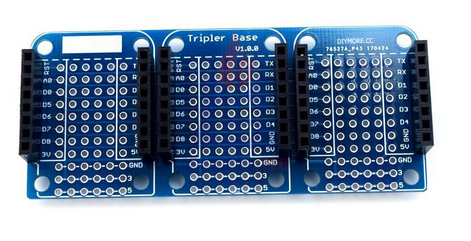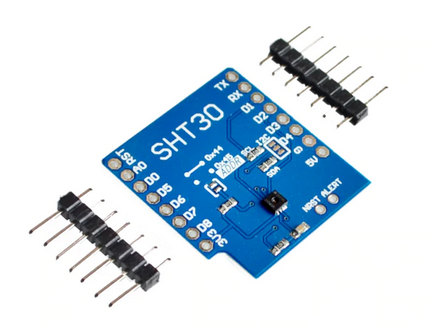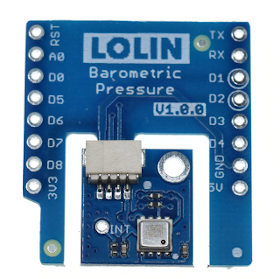-
Notifications
You must be signed in to change notification settings - Fork 3
The Hardware used in the Course
The CPU card features an Espressif ESP32-wroom-32 with
- 2 low-powerXtensa®32-bitLX6microprocessors
- 520 KB of on-chip SRAM for data and instructions
- 4 MB of SPI flash
- I2C, I2S, SPI interfaces
- 3 UARTs, 12 bit ADC up to 18 channels, 8 bit DAC
Here is a photo of the board:

For more details please read the data sheet: http://localhost/pub/UCC_Course_2020/TheHardware/esp32-wroom-32_datasheet_en.pdf
This board has no active elements but it connects sensor shields to the CPU board. Like this the necessary connections are made in a Lego based manner by just plugging modules together without any further cable connections or soldering.

Two different types of switches are available as shields: a mechanical push button switch and a PIR sensor.
| Mechanical Switch | PIR Sensor |
|---|---|
 |
 |
On the CPU card there is a user programmable LED which is used in the exercise on LEDs. This is a simple, single color (blue) LED. In the series of shields we can also find an LED chain with 7 addressable WS2812 RGB LEDs.

There are several different environmental sensors of which we will use the DHT11 and the SHT30 temperature and humidity sensors. We work with both sensors in different exercises because these shields use quite different communication protocols which we want to study.
In addition to the temperature and humidity sensors we have a barometric pressure sensor, (which also allows to measure ambient temperature) the BMP180. With these 3 sensors we can construct a simple weather station.
| DHT11 Temperature and Humidity Sensor | SHT30 I2C Temperature and Humidity Sensor | BMP180 Barometric Pressure Sensor |
|---|---|---|
 |
 |
 |
In order to store data taken with the environmental sensors we us a micro SD card supplied with the Real Time Clock and Data Logger card. With the Real Time Clock we cat get a time stamp telling is when the data have been taken.

Of course we can transfer the measurement data to a PC over the Internet and use the plotting facilities on the PC to graphically show the data but it may sometimes be interesting to show the data also on the micro-controller without the need of an Internet access. This can be done with TFT screen sensors. The one we will use has a resolution of 128*128 pixels and text as well as simple pixel based graphics is possible with these devices.

You can also control differnt types of motors with the ESP32. To demonstrate this we use the motor controller shield.

| DC Motor | Servo Motor | Stepping Motor |
|---|---|---|
 |
 |
 |
Course on the Internet of Things at the University of Cape Coast, Ghana